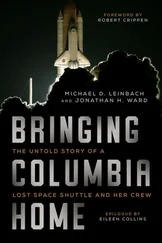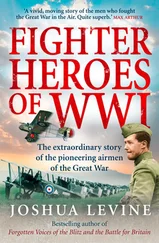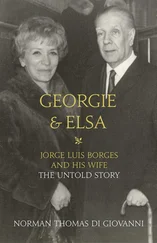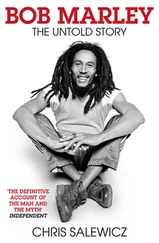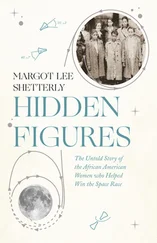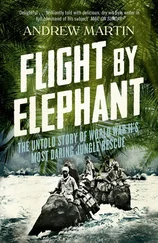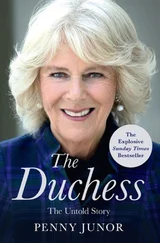By midnight the covering party was deployed ahead of the firing point and the MBRL was ready. ‘AIIah o Akbar. Mordabad Shuravi’ (God is great. Death to the Soviets): with this shout the firing started. In less than half an hour all sixty rockets had gone and the Rishkoor complex was burning brightly. While the MBRL was in action the enemy opened up with a suitably impressive expenditure of ammunition, well away from the Mujahideen.
The move back was hurried, no attempt being made at silence as speed was more important in order to make the most of the remaining five hours of darkness. With much lighter loads now the firing was over, the column moved past the post at a brisk walk. The Afghans had stopped firing, but after the Mujahideen had disappeared into the gloom they opened up again, with streams of tracer rounds flashing down the track towards the firing point. They had kept their bargain to the letter. Later, back at Chakri, Kabul Radio confirmed that Rishkoor had been hit and that fires had taken several hours to bring under control. Like the other Pakistani teams, the major and his two NCOs were later congratulated and decorated by the President.
Kabul was well defended with a huge concentration of troops, guns and aircraft. By early 1985 no less than three rings of mutually supporting positions surrounded the city (see Map 13). We could not, until 1986, carry out stand-off attacks by day. Until the introduction of the Stinger in late thirty Commanders were involved and we offered them extra MBRLs as an incentive.
For the first few weeks all went well, but with the heavy snowfalls in January movement towards Kabul became more and more difficult and expensive. Some commanders started to withdraw due to lack of shelter, food, clothing and equipment with which to counter the freezing conditions. This created a vacuum around Kabul of which the Soviets were quick to take advantage. They mounted offensives against Chakri and Paghman where resistance was light. The result was that we lost ground gained in the summer, the enemy built another series of posts to consolidate their gains and protected them with wire and mines. We had been pushed back, the range to our targets in the city had been lengthened, and our grip weakened. In 1985 we lost Chakri completely. In 1986 Paghman was taken, with only Koh-i-Safi remaining unscathed. It was not until the introduction of Stingers in early 1987 that we were able to regain some lost ground in the Paghman area. Until then the inevitable pattern was repeated annually: a successful campaign of attacks up to December, a winter withdrawal, with the Soviets pushing their defences outwards, leading to our needing longer-range weapons. Thus was our ability to strangle Kabul eroded.
I believe that if we had diverted enough money for appropriate clothing from the start we could have kept fighting throughout the year. I tried hard during 1985 not to repeat the errors of previous years, putting forward urgent requests for 5,000 sets of winter clothing to General Akhtar. He did not have the money. The best he could hope for was 1,000 sets, which, in order to save funds, were to be purchased from Pakistani manufacturers. Despite ISI’s best efforts they did not honour their commitments.
Some Commanders did make an effort to keep a token force of 30-40 men operative throughout the winter, with personnel changing over after about two months, but it was seldom effective. To live in a tent placed on top of the ruined walls of a house, with the temperature of minus 15-20 degrees, completely isolated, living on a meagre ration of nan bread, as for most of the time there were no civilians within 15 kilometres, was asking a lot. These men had to remain alert, do sentry duties, and go out to launch rocket attacks or collect firewood. If they were lucky they obtained a little flour or tea, but not sugar. Tea was often drunk while eating a sweet to make it slightly more palatable. Without warm clothing or boots, the battle against the cold was unremitting and unsuccessful. Mujahideen in these conditions all lost 20-25 pounds in weight, came back haggard, their faces drawn, aged and blackened by fire smoke. Winter was an infinitely tougher opponent than the Soviets.
During 1985 operations elsewhere were, I believe, showing that the Mujahideen could get the upper hand. It only we had had Stingers I am certain the war would have been winnable much earlier. As it was, we were struggling to maintain the fight, and around Kabul, our primary target, we were losing momentum. The CIA had provided me with a series of excellent satellite photographs of dozens of enemy posts within a 20-kilometre radius of Kabul. With the aid of these I set about renewed planning.
It was at this time that General Akhtar came up with the idea of a concerted attack to capture a part of Kabul and hold it for up to 36 hours. If it could be achieved, it would have a tremendously favourable effect on Mujahideen morale. I asked for time to study the proposal, but the General had mentioned it to Hekmatyar and Sayaf, both of whom were enthusiastic, provided they got more heavy weapons, so I was ordered to discuss plans in detail immediately.
The results of my talks were that such an operation would need to be a joint one, with at least two Parties cooperating. In the absence of an effective anti-aircraft weapon, the attack could not succeed by day. We would need to mount simultaneous diversionary attacks on Kabul, Bagram and Jalalabad airfields. Finally, secrecy would be of paramount importance—hard to ensure if we were to group 5,000 Mujahideen around Kabul. This was the number that the Leaders insisted was the minimum necessary.
Our view was that, instead of holding Kabul for 36 hours, which meant fighting throughout at least one day, we should confine the operation to the launching of numerous small attacks from multiple directions. These should be during one night only, with exfiltration complete by dawn. Neither of the Leaders was prepared to accept a joint operation, and our alternative plan did not meet with their approval either, as it did not, in their view, involve a sufficiently generous allocation of heavy weapons.
I was never able to coordinate truly joint attacks on Kabul, although I believe I created this impression to the enemy by a system of briefing numerous Commanders to carry out operations against targets from multiple directions during the same period.
Kabul was the key to Afghanistan; of this I have no doubt. It should have fallen within weeks of the Soviet withdrawal in 1989, but the story of why it did not belongs to a different chapter.
“This animal is very bad; when attacked it defends itself.”
THE Soviet high command was acutely sensitive to the activities of the Mujahideen in the eastern border provinces of Kunar, Nangarhar and Paktia. Just across the frontier in Pakistan were the Mujahideen’s forward supply bases, training facilities and scores of refugee camps. From this area the great bulk of arms and ammunition poured into Afghanistan in an endless stream of caravans, or pack trains of animals, moving along the tracks and trails through the mountains. The strategic importance to both sides of this border zone, from Barikot in the north, to Urgun in the south, is illustrated on Map 1.
A main road ran from Kabul to Peshawar, via Jalalabad, over the Khyber Pass. For the Soviets Jalalabad was a key city. All roads, tracks and valleys from the frontier converged on Jalalabad. Here were the headquarters of the Afghan 11th Division, the Soviet 66th MRR, a Spetsnaz battalion, plus the 1st Afghan Border Brigade. Half-way up the Kunar Valley to the NE was another Afghan division, the 9th, at Asadabad, with a second Spetsnaz battalion further up still at Asmar (Map 11). At the Afghanistan end of the Khyber Pass was Torkham, overlooked by a high, dominating feature occupied by the Afghans, called Shamshadsar. In early 1984 I was awakened one night with the news that Shamshadsar had fallen to the Mujahideen and that the Soviet/Afghan counter-attack had failed to dislodge them. Apparently the Afghans had given an ultimatum to the local Pakistan border post that unless the Mujahideen withdrew they would shell the nearby Pakistani civilian population. This had caused considerable panic. The Mujahideen had refused to budge unless so instructed by General Akhtar, who was in Karachi. The governor of the NWFP was furious and had complained to President Zia. The upshot was I had to go, reluctantly, to get the Mujahideen to pull back. Eventually I succeeded, but thereafter there was a presidential ban on any Mujahideen offensives within 10 kilometres of Torkham, or of Chaman on the Khojak Pass in Baluchistan.
Читать дальше


